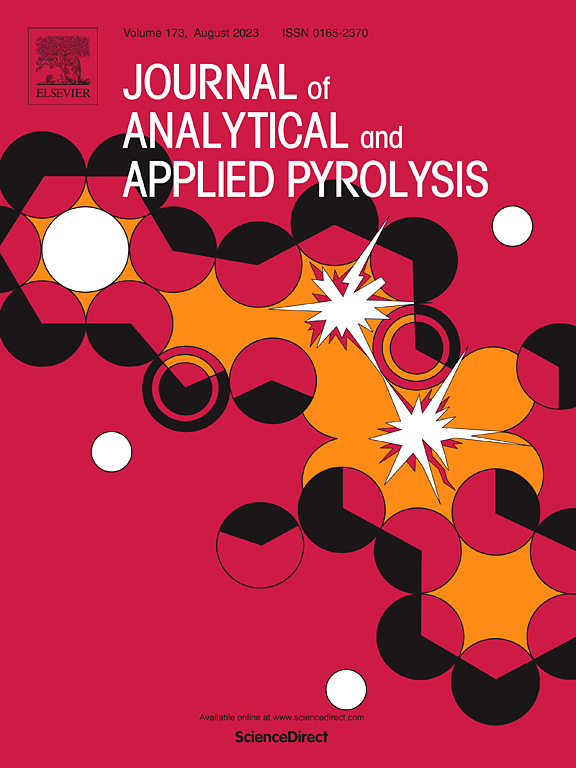海稻秸秆与低密度聚丙烯共热解:推进可持续燃料生产的意义
IF 6.2
2区 化学
Q1 CHEMISTRY, ANALYTICAL
引用次数: 0
摘要
为解决高灰分、高硅农业废弃物和塑料废弃物的再生利用难题,系统研究了海稻秸秆(SR)与低密度聚丙烯(LDPP)共热解。最佳条件(500 °C, 80 mL/min N2, SR:LDPP=1:3)与单独SR热解相比,可协同提高产油率257.6 %,同时显著改善燃料质量。综合表征表明,含氧化合物减少了92.8 %,氮减少了93.8 %,热值提高了70.3 %,达到42.62 MJ/kg。热分析和光谱分析(TG-FTIR/GC-MS)表明,氢自由基转移是LDPP分解的核心机制,通过CO/CO2形成和碳氢化合物富集促进脱氧。这一过程有效地缓解了SR的固有局限性,即产油率低和稳定性差,同时将废塑料转化为有价值的氢供体。该研究建立了一条将具有挑战性的沿海生物质和塑料污染转化为优质生物油的协同途径,实现了82.2 %的碳含量和近乎完全的氮去除(0.04 wt%)。这些发现为盐碱化农业地区的可持续废物管理提供了重要见解,推进了针对有问题原料的循环经济战略。本文章由计算机程序翻译,如有差异,请以英文原文为准。
Co-pyrolysis of sea rice straw and low-density polypropylene: Implications for advancing sustainable fuel production
Co-pyrolysis of sea rice straw (SR) and low-density polypropylene (LDPP) was systematically investigated to address challenges in valorizing high-ash, high-silicon agricultural residues and plastic waste. Optimal conditions (500 °C, 80 mL/min N2, SR:LDPP=1:3) synergistically enhanced oil yield by 257.6 % relative to SR pyrolysis alone while drastically improving fuel quality. Comprehensive characterization revealed a 92.8 % reduction in oxygenated compounds and 93.8 % nitrogen reduction, elevating calorific value by 70.3 % to 42.62 MJ/kg. Thermal and spectroscopic analyses (TG-FTIR/GC-MS) demonstrated hydrogen radical transfer from LDPP decomposition as the core mechanism, facilitating deoxygenation through CO/CO2 formation and hydrocarbon enrichment. This process effectively mitigated SR's inherent limitations—low oil yield and poor stability—while converting waste plastic into valuable hydrogen donors. The study establishes a synergistic route for transforming challenging coastal biomass and plastic pollution into premium bio-oil, achieving 82.2 % carbon content and near-complete nitrogen removal (0.04 wt%). These findings provide critical insights for sustainable waste management in saline agriculture regions, advancing circular economy strategies for problematic feedstocks.
求助全文
通过发布文献求助,成功后即可免费获取论文全文。
去求助
来源期刊
CiteScore
9.10
自引率
11.70%
发文量
340
审稿时长
44 days
期刊介绍:
The Journal of Analytical and Applied Pyrolysis (JAAP) is devoted to the publication of papers dealing with innovative applications of pyrolysis processes, the characterization of products related to pyrolysis reactions, and investigations of reaction mechanism. To be considered by JAAP, a manuscript should present significant progress in these topics. The novelty must be satisfactorily argued in the cover letter. A manuscript with a cover letter to the editor not addressing the novelty is likely to be rejected without review.

 求助内容:
求助内容: 应助结果提醒方式:
应助结果提醒方式:


